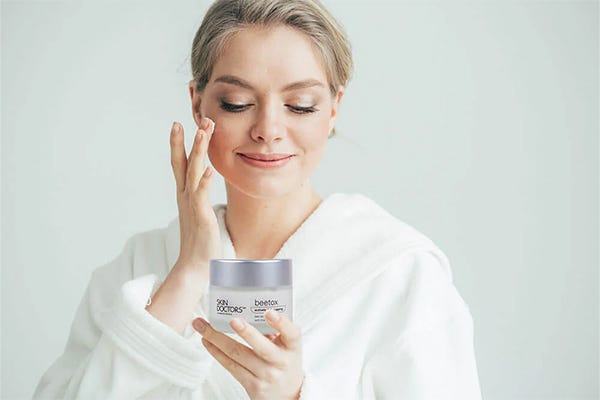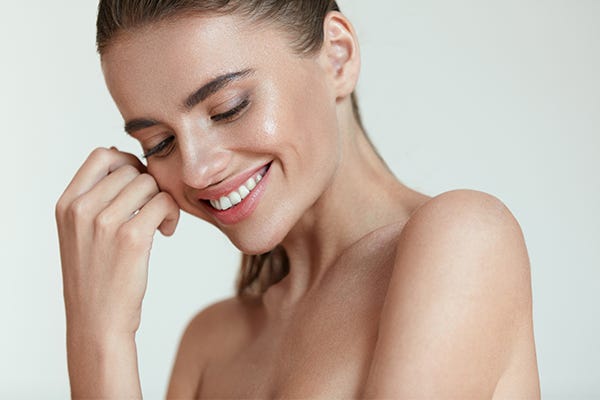How to Reduce the Appearance of Crow’s Feet on the Face
Do you love to smile?
We all do! It’s a great feeling.
That is, of course, until you look into the mirror and start seeing those stubborn wrinkles and fine lines around the outer corner of your eyes.
They’re commonly referred to as crow’s feet, and as we get older, they become more prominent.
Fortunately, you don’t have to scowl for the rest of your life! There are ways to slow the natural skin ageing process today to reduce the appearance of these crow’s feet.
Here is some more information to help you, so you can continue to smile every day.
What are crow’s feet on the face?
Crow’s feet are common signs of ageing that start to become visible as early as our mid to late 20s.
They are a series of fine lines and wrinkles around the corner of your eyes which look like the three toes of a crow’s foot – hence the name.
Crow’s feet are the result of your skin repeatedly folding as you squint or make facial expressions. Over time, your skin doesn’t bounce back as it once did, which is when those creases start to form.
Unfortunately, crow’s feet appear to be more noticeable because the skin around the eyes is thinner and more likely to dry easily.
What causes crow’s feet?
First and foremost, you must also keep in mind that crow’s feet are part of the natural signs of ageing.
As you get older, your skin’s elasticity and collagen levels decrease. The loss of the skin’s ability to stretch and remain plump makes it unable to go back to its original radiant, smooth and youthful state.
But there are also other external causes of crow’s feet too.
As stated earlier, the skin around the eyes is more sensitive than the skin on the rest of your body. This makes the eye area more vulnerable to environmental factors that can cause damage and accelerate ageing, such as UV exposure and pollution.
How to reduce the appearance of crow’s feet
Since crow’s feet are normal as you age, they cannot be prevented entirely.
However, there are a few ways you can minimise their prominent appearance, such as:
Provide sun protection for your eyes
Too much sun exposure can harm your skin because of the UV rays that can damage the collagen stored within it.
To protect your skin, don’t forget to wear high-SPF sunscreen. You may also opt to wear sunglasses and a hat if needed.
Observe a healthy diet and lifestyle
You can limit toxins and free radicals entering your body through a proper diet and healthy habits. For example, avoid smoking and try to exercise regularly.
Eating lots of fresh fruits, vegetables and foods with healthy oils can give your skin the extra nourishing nutrients it needs. Remember to drink lots of water as well to keep your skin hydrated!
Boost your skin’s moisture levels
Moisturising is an effective way to reduce the appearance of fine lines and wrinkles.
Make sure not to leave out your eye area when you’re applying moisturiser. Furthermore, try using specific eye creams or serums that boost collagen and antioxidants. These kinds of quality products provide the skin around the eyes with the care and protection it needs to keep your skin radiant.
Try our Skin Doctors Wrinkle Freeze product
Our Wrinkle Freeze 15ml is a superior lightweight under eye cream which is clinically proven to reduce the appearance of eye wrinkles, fine lines, and crow’s feet.
In just 28 days, it promises to deliver the following results:
- Wrinkle volume by up to 93.5%
- Wrinkle depth by up to 71.4%
- Wrinkle area by up to 77.8%
Aside from those, Skin Doctors Wrinkle Freeze product offers additional benefits such as:
- Smoothening the skin around the delicate eye area
- Increasing the moisture retention of the skin around the eye area
Make sure to note that it is recommended for:
- Dehydrated skin and fine lines
- Aged skin as a treatment
- Younger skin as a preventive measure
It’s never too early to start using anti-ageing products!
For more information, visit our website: https://skindoctors.com.au/skin-doctors-wrinkle-freeze-15ml
Related Products
1 Item
-
 Wrinkle Freeze 15mLOut of stock
Wrinkle Freeze 15mLOut of stock
1 Item




